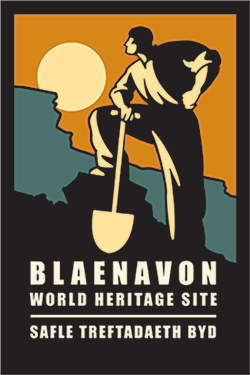Dyddiau cynnar a siop y cwmni
Pan agorodd Gwaith Haearn Blaenafon ym 1789, daeth cannoedd o bobl yno i chwilio am waith. Ychydig iawn oedd ym Mlaenafon cyn i'r gwaith haearn gael ei adeiladu felly'r haearn feistri fyddai’n darparu ar gyfer anghenion y gweithwyr a'u teuluoedd. Roedd modd prynu bwyd a dillad o siop y cwmni (a elwir hefyd yn 'siop drwco neu ‘siop 'tomi').
Roedd angen siop y cwmni ym mlynyddoedd cynnar y Chwyldro Diwydiannol, ond fe'i defnyddiwyd hefyd i gadw prisiau'n uchel a chadw pobl mewn dyled i'r cwmni. Ni thalwyd gweithwyr mewn arian parod, felly ni allent wario eu harian mewn mannau eraill. Roedd y system drwco ’yn amhoblogaidd iawn ac roedd yn un o achosion y brotest yn ne Cymru ar ddechrau'r 19eg ganrif. Dros amser, lluniwyd deddfau newydd i gael gwared ar y system drwco a'i hanghyfiawnderau.
O bell, mae'r gwaith yn edrych fel tref fechan, wedi'i hamgylchynu â phentyrrau o fwyn, glo a chalchfaen, ac wedi'u bywiogi â holl fwrlwm a gweithgaredd sefydliad cyfoethog sy'n tyfu ... er mai dim ond ym 1789 y gorffennwyd y gwaith, cyflogir tri chant a hanner o ddynion, ac mae poblogaeth yr ardal yn fwy na mil o eneidiau.
Archddiacon William Coxe (1801)

